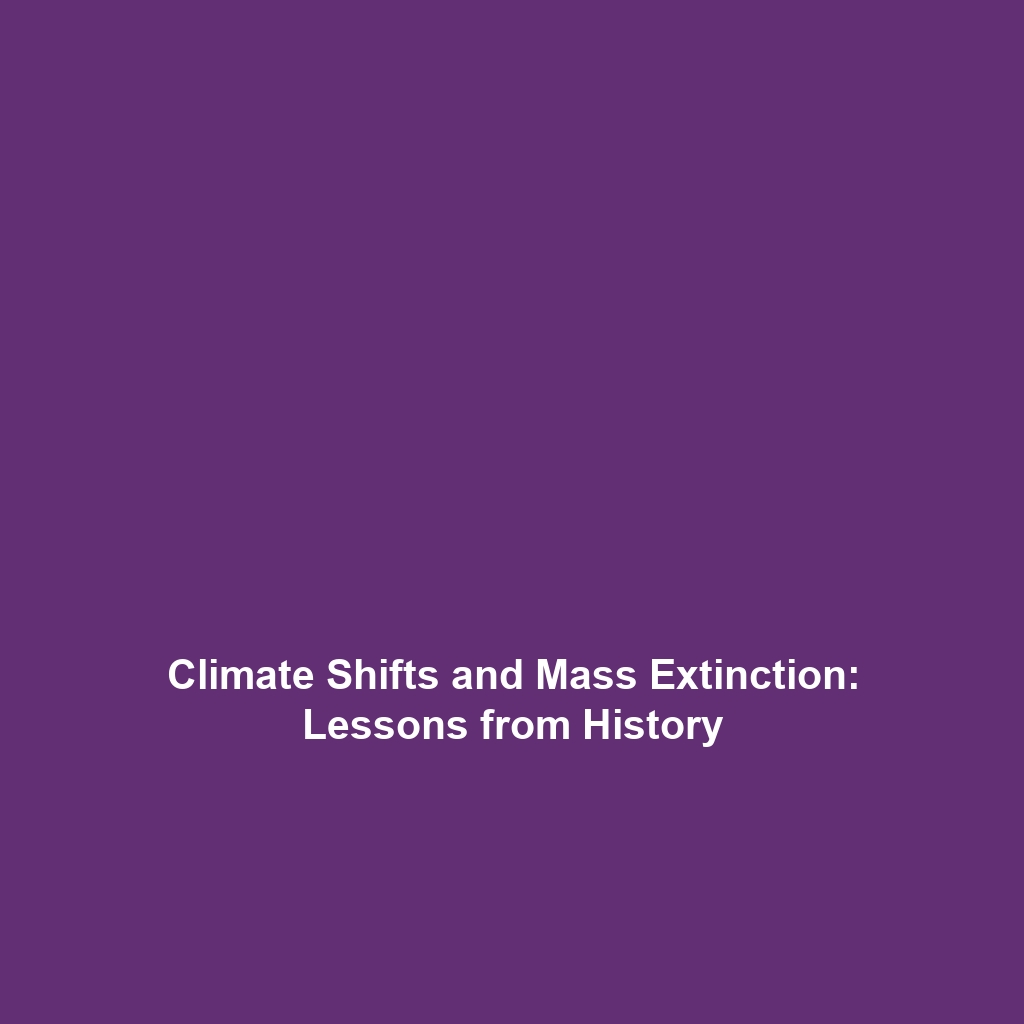Climate Shifts and Mass Extinction Events: The Asteroid Impact at the End of the Cretaceous Period
Introduction
The profound effects of climate shifts and mass extinction events in Earth’s history offer critical insights into our planet’s evolution. One of the most significant phenomena occurred at the end of the Cretaceous Period, marked by a catastrophic asteroid impact. This event not only led to the extinction of the dinosaurs but also triggered extensive climatic changes that reshaped life on Earth. Understanding these events is essential for comprehending the broader narratives of Climate History, as they inform ongoing discussions about biodiversity and environmental change.
Key Concepts
1. Mass Extinction Events
Mass extinction events are rapid declines in biodiversity, where a substantial percentage of species become extinct in a relatively short geological period. The event at the end of the Cretaceous Period, approximately 66 million years ago, is one of five major mass extinctions. It is widely believed that the impact of a 10-kilometer-wide asteroid, combined with volcanic activity and climate shifts, triggered this crisis.
2. Climate Shifts
Climate shifts refer to significant changes in regional or global climate patterns. The aftermath of the Cretaceous asteroid impact involved dramatic temperature drops and altered precipitation patterns, disrupting ecosystems and leading to the extinction of approximately 75% of Earth’s species. Such shifts have been crucial in shaping the evolutionary pathways of surviving organisms.
Applications and Real-World Uses
Understanding climate shifts and mass extinction events offers valuable insights in several fields, including:
- Conservation Biology: Information gleaned from past events helps in developing strategies to protect endangered species and ecosystems.
- Paleoclimatology: Studies of ancient climates enhance our understanding of current climate models and variabilities.
- Education and Outreach: Teaching about mass extinctions and climate impacts raises awareness about biodiversity conservation.
Current Challenges
Researching climate shifts and mass extinction events presents several challenges, including:
- Incomplete Fossil Records: Not all events are well-documented, limiting our understanding of prehistoric extinctions.
- Complex Interactions: The interplay between multiple factors, such as volcanic activity, climate change, and asteroid impacts, complicates analysis.
- Public Engagement: Communicating scientific findings effectively to foster public understanding and action remains a hurdle.
Future Research and Innovations
Ongoing research into climate shifts and extinction events is poised for exciting developments, such as:
- Advanced Modeling: Enhanced computational models will improve predictions of climate impacts and biological responses.
- Paleogenomics: DNA analysis from ancient organisms could provide insights into how life adapted following dramatic climate shifts.
- Interdisciplinary Studies: Collaboration between geologists, climatologists, and biologists is essential for a comprehensive understanding of past ecosystems.
Conclusion
Climate shifts and mass extinction events, epitomized by the asteroid impact at the end of the Cretaceous Period, are pivotal to our understanding of Climate History. These occurrences underscore the interconnectedness of life and the environment, informing conservation efforts in the current epoch. To further explore this topic, consider reading about related ecological studies and the ongoing effects of climate change on modern biodiversity.









